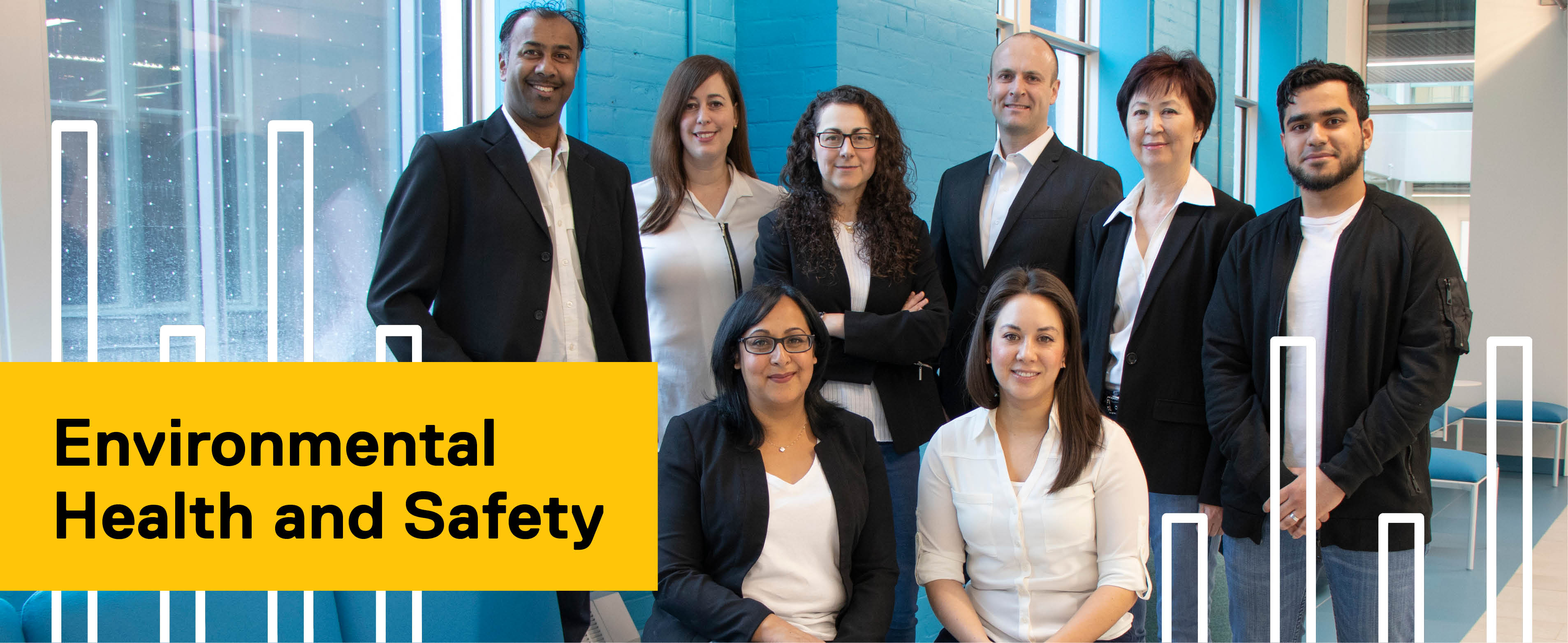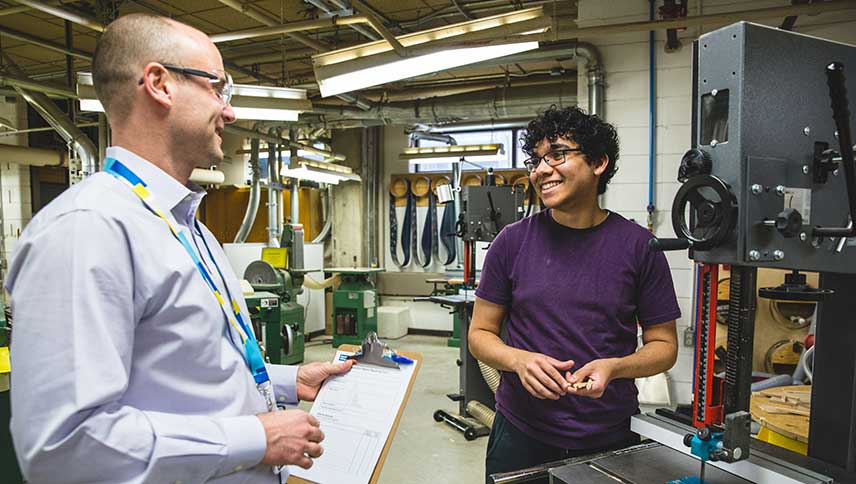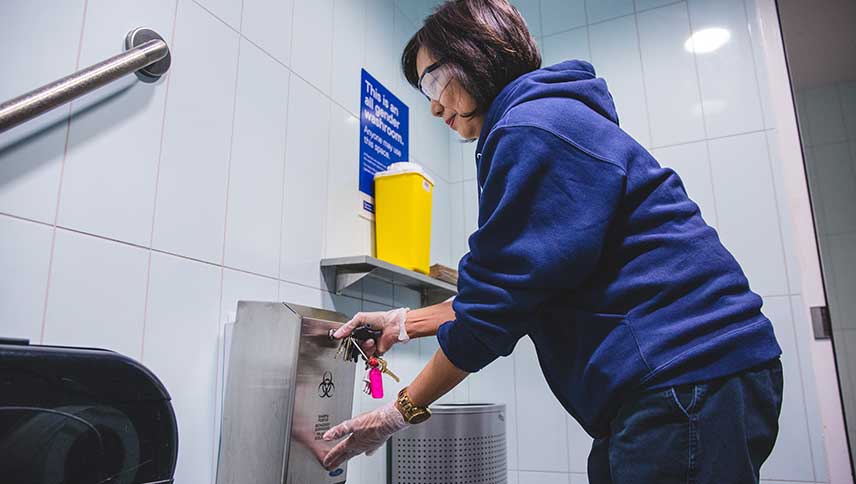Annual Report 2018 - Archive


A message from Geeta Sharma, director, Environmental Health and Safety (EHS) and Risk Management

Addressing distinct health and safety needs
Each day, the Ryerson University community accesses a variety of spaces across campus: classrooms, kitchens, laboratories, workshops and studios, offices and more. Each of these settings has distinct health and safety needs, as do the thousands of students, faculty and staff who learn and work on campus.
From office spaces to laboratories to workshops and studios, a variety of initiatives driven by Ryerson’s Environmental Health and Safety (EHS) team help to keep faculty, staff and students safe. This work is supported by dozens of Departmental Safety Officers, Fire-Wardens, First-Aiders and Joint Health and Safety Committee members. Along with our leaders, employees, and students, our community continues to build a strong and sustainable culture of safety.

Commitment reflected in safety performance
This commitment is reflected in Ryerson’s safety performance in 2018:
- a 44% reduction in lost time days from last year
- a 15% decrease in lost time injuries from 2017
- a 51% increase in incident reporting compared to 2017
- doubling the number of safety inspections from 2017
In 2016 and 2017, our focus in program development was centered around our labs, including biosafety, radiation and laser safety programs. These programs are now well-integrated in these spaces. In 2018, we centered our attention on machine shops and conducted numerous assessments on high risk activities and equipment.

Key highlights of the past year
This report presents the EHS initiatives and advances of 2018. As we continue to build processes and educate our community to enable smart risk taking, we’re pleased to highlight key areas of success over the past year:
- Within our machine shops, we conducted extensive audits on noise, racking systems, and machines.
- We have standardized risk and hazard assessment templates to assist our community in making risk-informed decisions.
- We developed a comprehensive Chemical Safety Program that incorporates end-to-end management of over 16,000 chemicals on campus.
- We implemented a university-wide Sharps Container Program with the goal of having a sharps container in every Ryerson washroom to provide a safe disposal method for sharps. This is now 80% complete, with the remaining 20% to be installed by the end of July.
- We rejuvenated our Incident Reporting Protocol, and immediately saw a 51% increase in the reporting of near-misses and incidents, allowing us to fully investigate and implement controls that would prevent future recurrences of similar incidents.
- We supported over 400 research applications and queries to ensure that the safety and risk impacts were carefully evaluated and mitigated appropriately.
- The University was the recipient of two prestigious national safety awards.
- In October, Ryerson received a Canada’s Safest Employer award from Canadian Occupational Safety magazine recognizing the outstanding accomplishments in promoting the health and safety of our employees and students at the university.
- At CAUBO’s 2018 Quality & Productivity Awards in Vancouver, Ryerson was awarded the honorary mention for its Aches, Pains and Office Strains program.

Partnerships and collaboration across campus
Much of the work highlighted throughout this report often happens in the background, and the success of each initiatives is largely dependent on the application by partners across campus. As we reflect on the year behind and look forward to the year ahead, I’m especially appreciative of the support provided by our faculty, staff and students, as well as Ryerson’s leadership, for making health and safety at Ryerson a priority. I also am truly grateful to my exceptional team of EHS professionals who help ensure that every one of us returns home safely at the end of our work or academic day at Ryerson.
A snapshot of 2018 in EHS
Conducted machine safeguarding and emergency stop reviews for
143 machines.
Coordinated a safety review of the 52 racking systems used across campus.
Offered almost 35 in-class safety training sessions on over 20 different topics.
Inspected 95% of 1200 medium and high risk spaces. The remaining 5% will be inspected by September.